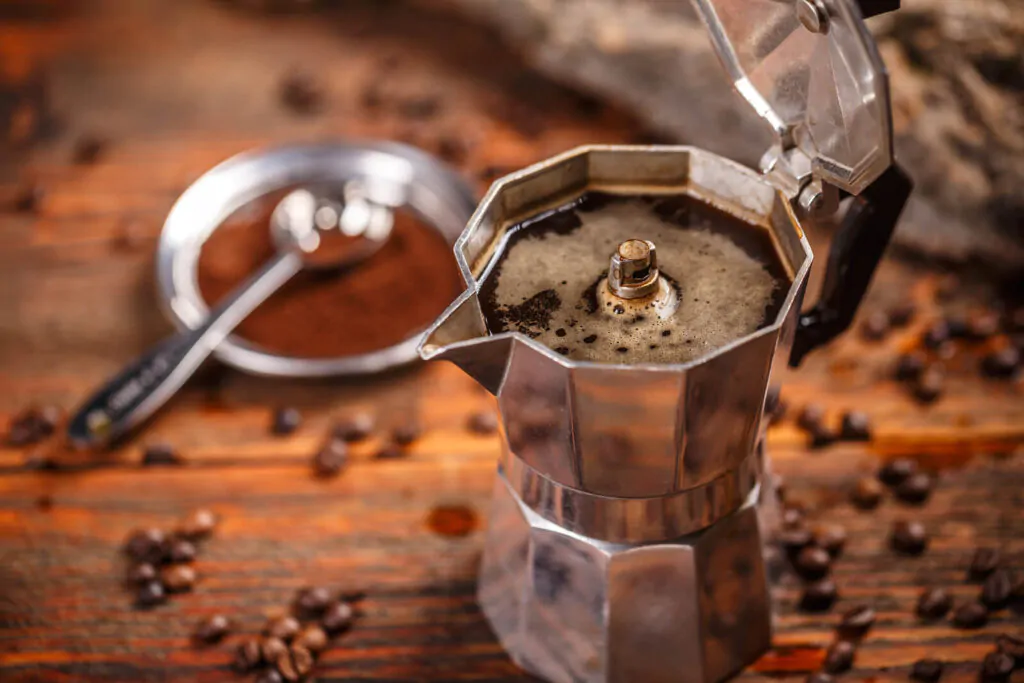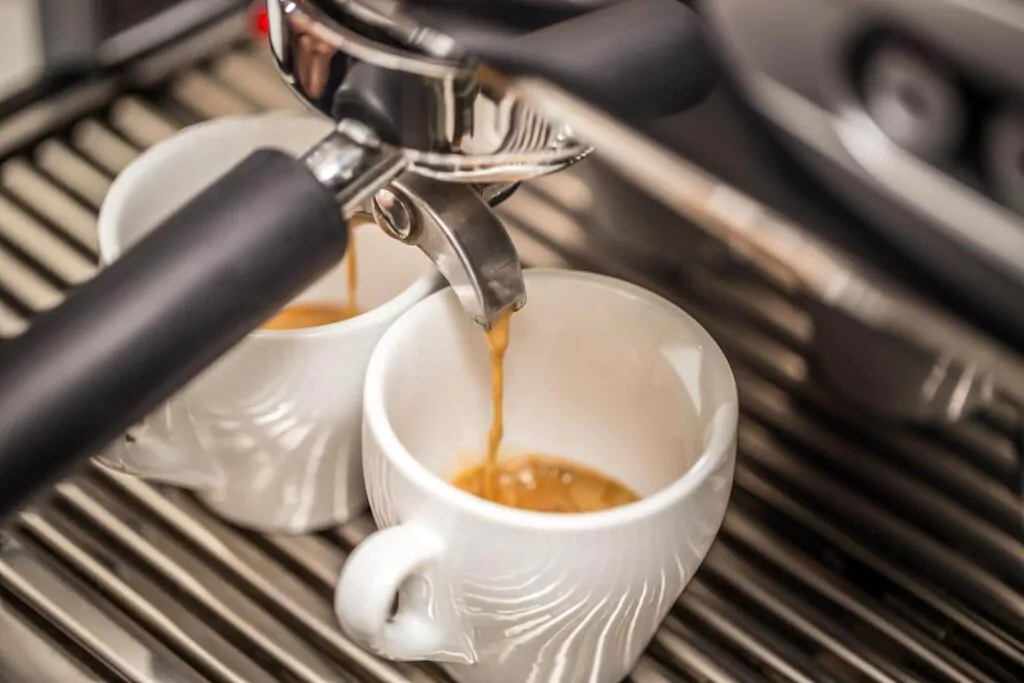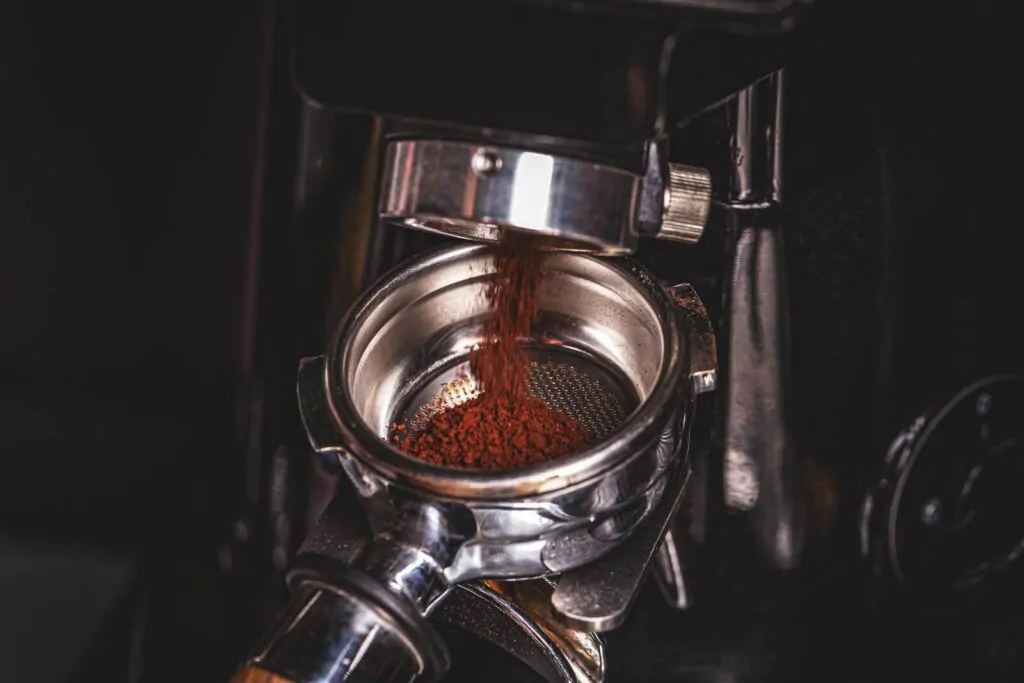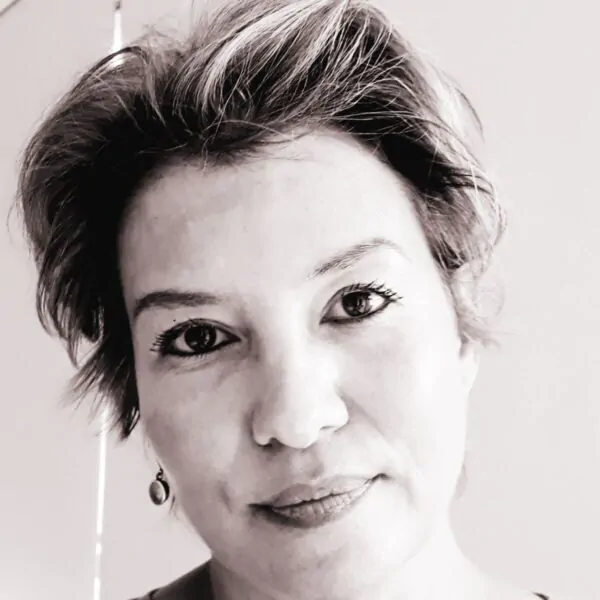If you like your coffee strong and packed with flavor, a Moka pot is a good option. The question, however, do Moka pots make espresso?

Moka pots are also referred to as stove-top espresso makers since they produce strong, concentrated cups of coffee through the use of pressure and steam. Is the coffee you get from a Moka pot true espresso, however? The answer is no.
Although the Moka pot provides pressure-brewed coffee with bold flavors, it’s not espresso in the real sense of the word. If you’re an espresso lover who’s wondering whether a Moka pot will provide you with the same deliciously dark and intense coffee that you get from an espresso machine, read on.
A Question of Pressure
Perhaps a good starting point for any discussion about espresso is the following: if you want true espresso, you need to visit your nearest coffee bar or invest in an espresso machine.
Despite the fact that both Moka pots and espresso machines brew coffee using the same technique, namely pressure, the pressure levels in these two coffee makers are vastly different. The results are then also two different cups of coffee.
In an espresso machine, hot water is forced under high pressure through finely ground, compacted coffee. The pressure level in these coffee makers typically ranges from nine to 16 bars.
A substantially lower pressure of between one to three bars is present in Moka pots. In these coffee makers, hot steam pushes water upwards and through the coffee grounds. The final extraction then rises up through a tube into the top chamber.
A Difference in Taste

Because of the difference in pressure levels, Moka pots and espresso machines provide different-tasting coffee. Although both will give you a strong and full-bodied cup of coffee, real espresso is more intense and has more complex and tightly packed flavors.
While the coffee you get from a Moka pot is typically about two to three times as concentrated as regular drip coffee, true espresso is between five to eight times stronger than normal coffee.
Although you can use the espresso-style coffee you get from a Moka pot to make espresso-based drinks such as cappuccinos or lattes, using true espresso will result in richer and more flavorful coffee drinks.
Apart from a richer taste and thicker mouthfeel, espressos also contain more caffeine than coffee brewed in a Moka pot. However, compared to the coffee you’ll get from other coffee makers, a Moka pot delivers a bold cup of coffee with a considerable amount of punch.
Crema or No Crema
The presence or absence of crema is another distinguishing factor when it comes to Moka coffee versus true espresso. Crema is a foam with a creamy consistency that’s always present in espressos that are made in espresso machines.
It is produced when the hot water in an espresso machine hits the coffee grounds under high pressure, which results in the water emulsifying the oils in the coffee. These soluble oils then mix with carbon dioxide that’s released from the coffee grounds during the brewing process, resulting in microscopic bubbles that form the foam we call crema.
Because of the lower pressure levels in a Moka pot, the coffee lacks the layer of crema present in shots of authentic espresso. However, if you invest in the upgraded version of the Moka pot, called the Brikka pot, you’ll get some crema on top of your coffee.
To address the low-pressure issue of traditional Moka pots, Bialetti added a special valve to the Brikka pot, which helps to provide more pressure, which is how the crema is created.
Grind Matters

Neither Moka pots nor espresso machines require a specific coffee bean or roasting level. Although many opt for a darker roast when it comes to espressos-style coffee brews, it’s also perfectly OK to go for lighter roasts.
As far as coffee grind is concerned, however, a Moka pot and espresso machine have different requirements. While a Moka pot requires a finer grind than you’ll use for a drip coffee maker, for instance, the grind is coarser than what you need for an espresso machine.
The reason that espresso machines work well with a super fine grind is that the water passes through the coffee in a very short time. To ensure that the coffee is extracted in about 20 to 30 seconds, a fine grind is needed to slow the flow of the water and ensure that all of the compacted coffee grounds are moistened.
Since Moka pots have a longer brewing process than an espresso machine, you want to use a slightly coarser grind. If you’re not sure whether your grind is correct, you can experiment with different grinds to see what brews you get.
If the brew is too weak, you’ve used a too coarse grind and your coffee is under-extracted. If you get a bitter cup of coffee, chances are that the grind is too fine. You may also be interested in reading about what good espresso tastes like.
A Short Comparison of Moka Coffee vs. True Espresso
Here is a short comparison between a Moka pot coffee and a true Espresso:
| Moka-Pot Coffee | True Espresso |
| Although Moka coffee is thicker than drip coffee, espresso has a heavier mouthfeel. | Espresso is generally thicker than Moka-pot coffee and has the viscosity of warm honey. |
| Moka coffee comes sans a layer of crema. | True espresso contains a layer of crema on top. |
| Moka coffee typically contains more caffeine than drip coffee. | Espresso provides a stronger kick than all other types of coffee. |
| With a Moka pot, you need to allow for about 10 minutes to brew a cup of coffee. | As long as your espresso machine has been heated, you can have a shot of espresso within 30 seconds. |
| The coffee you get from a Moka pot is full-bodied and has a robust flavor. | True espresso is dark, smooth, and bittersweet. It is more intense than Moka coffee and its flavors are more complex and subtle. |
